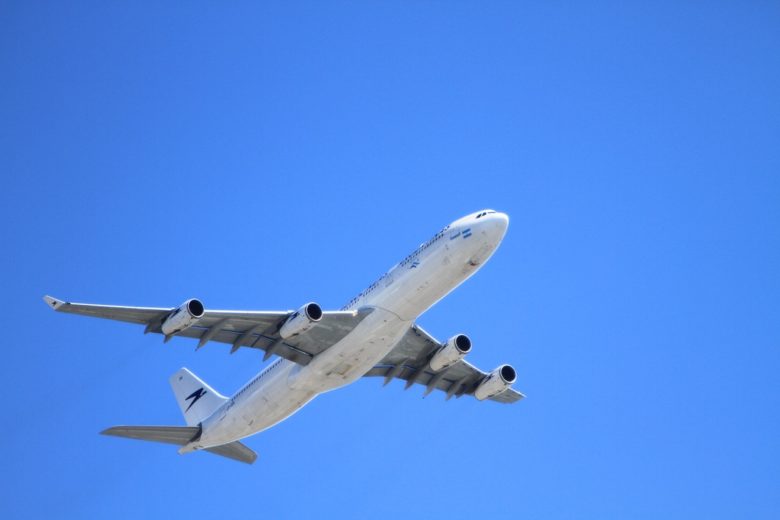
World’s First Plastic-Free Flight Paving the Way for Green Aviation
We are reader-supported. When you buy through links on our site, we may earn affiliate commission.
The aviation industry’s relationship with sustainability is somewhat complicated. Though industry leaders have acknowledged the environmental impact of air travel, progress is slow, and the damage is considerable. As of 2017, aviation was responsible for 11 percent of transportation-related emissions in the United States.
So how can today’s airlines affect change? Portuguese carrier Hi Fly has proven small changes are the best place to start, taking a significant step toward green aviation with the world’s first plastic-free flight. On December 26, they made a trip between Lisbon and Brazil without any single-use plastic items on board.
In this article, we’ll explore the implications of this simple, but no less important example of sustainability in air travel. As we examine the efforts of Hi Fly and carriers like them, we’ll show how the aviation industry is transitioning toward eco-friendly practices.
The World’s First Plastic-Free Flight
On an Airbus A340 traveling between Lisbon, Portugal and Natal, Brazil, Hi Fly made aviation history with the world’s first plastic-free flight, one of four trials scheduled over the holiday period. This small adjustment is an impressive achievement, given the expenditure of most airlines.
With plastic cups, stirrers, cutlery and packaging for straws, headphones and blankets, most airlines are plastic-dependent for many of their in-flight products. Only a fraction of this plastic is recycled, and considering that more than 100,000 flights take off around the world every day, the amount of waste is immense.
In acknowledgment of this, Hi Fly replaced its plastic products with green alternatives made from renewable materials. They substituted their standard inventory with bamboo cutlery, compostable containers and paper packaging, with each flight saving around 350kgs of single-use plastics. Their eco-friendly messaging is clear.
President of Hi Fly, Paulo Mirpuri, said, “This historic Hi Fly flight, without any single-use plastic items on board, underlines our commitment to making Hi Fly the world’s first ‘plastics-free’ airline within 12 months.” But what effect will this commitment have on the rest of the industry?
How Green Initiatives Are Taking Off
Hi Fly isn’t the only airline attempting to reduce its expenditure. Other carriers like Aer Lingus, Emirates, BA and Norwegian have commented on the necessity of efficient air travel. They have even touched on plans to implement green initiatives and enforce recycling. Still, none of them have finalized a timeline for plastic removal.
JetBlue, however, announced a 10-year purchase agreement to invest in renewable fuels made from bio-based feedstocks like plant matter. This deal represents the largest renewable jet fuel purchase agreement in the history of aviation, marking an enormous leap forward in the fight against non-renewables.
With a blend of 30 percent renewable jet fuel and 70 percent traditional Jet-A fuel, JetBlue will make a substantial reduction to its emissions without impacting the performance of its fleet. Not to be outdone, Virgin Atlantic, Boeing and LanzaTech partnered to power commercial flights on recycled waste carbon gases.
LanzaTech creates its jet fuel by taking carbon-rich gases — like those from steel making and industrial processes — and converting them into ethanol. They predict they’d have the capacity to meet 20 percent of the world’s demand for commercial jet fuel if they placed their technology in 65 percent of steel mills.
The Future of Sustainability in Air Travel
Though the efforts of airlines like JetBlue and Virgin Atlantic are positive, these transitions will take time and continued investment to fulfill. Some short-term solutions have the potential to reduce emissions and waste, like the introduction of a cap-and-trade system, and passengers can do their part to help.
These systems place restrictions on the amount of emissions a company can produce, and when applied to airlines at a consumer level, carbon trading arrangements might work. For example, each traveler would have an allotted number of air miles they could use per year, and upon using them, they’d have to bid for more.
Other solutions have just as much potential. Solar-powered airplanes are not only possible, but plausible, and the Solar Impulse 2 is evidence of that. Weighing only 2.4 tons with 17,000 solar cells, two pilots managed to managed to fly the aircraft 26,000 miles over 505 days, which, while slow, is still promising.
While cap-and-trade systems for airlines and solar-powered commercial aircraft are only theories at the present moment, it’s essential to invest in alternatives to modern methods of air travel. The current expenditure of today’s airlines is causing considerable damage to the environment, and change has to happen soon.
Looking to Tomorrow
Green aviation is an admirable goal — but admittedly challenging. With the industry’s carbon emissions and waste, achieving sustainability would require an enormous amount of planning and work. Still, carriers like Hi Fly have shown their dedication to improving upon outdated practices.
Looking toward tomorrow, environmentalists should feel optimistic. Hi Fly, JetBlue, Virgin Atlantic and other airlines are taking steps toward a cleaner future, and the path ahead is clear.
Share on
Like what you read? Join other Environment.co readers!
Get the latest updates on our planet by subscribing to the Environment.co newsletter!
About the author
Jane Marsh
Starting from an early age, Jane Marsh loved all animals and became a budding environmentalist. Now, Jane works as the Editor-in-Chief of Environment.co where she covers topics related to climate policy, renewable energy, the food industry, and more.





